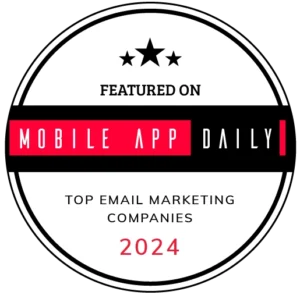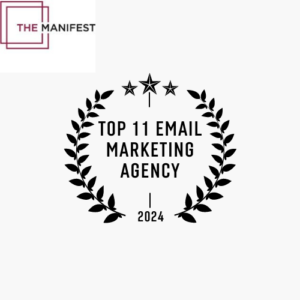Lead qualification is a crucial part of the B2B sales process. It helps businesses identify potential customers that are worth pursuing, saving time and resources. Without an effective lead qualification system, your sales team could waste valuable time on leads that are unlikely to convert. This guide will show you how to qualify B2B leads step-by-step, helping you streamline your process and close more deals.
What Is Lead Qualification in B2B?
Lead qualification is the process of determining whether a potential customer (or lead) is a good fit for your business based on certain criteria. In B2B (business-to-business) sales, this means assessing whether a lead has the need, budget, and authority to purchase your product or service.
Unlike B2C (business-to-consumer), B2B sales are more complex and often involve multiple decision-makers. This makes the process of qualifying leads even more important, as it helps you focus on those who are more likely to buy.
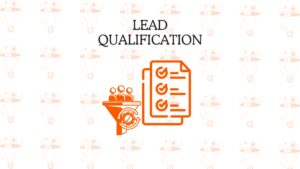
Why is Lead Qualification Important in B2B?
Lead qualification is essential because it ensures your sales team focuses on leads with the highest potential to convert. Here’s why it matters:
1. Saves Time: In B2B sales, it’s easy to get overwhelmed by a long list of potential leads. However, not every lead is worth pursuing. Lead qualification helps you identify which prospects are a good fit for your product or service early on. This way, you avoid spending time on leads that are unlikely to convert, allowing your team to focus on those who are genuinely interested and ready to buy. For example, instead of chasing every inquiry, you can prioritize leads from companies that fit your ICP (Ideal Customer Profile ), making your process much more streamlined.
2. Improves Efficiency: When your sales and marketing teams are aligned, they can work more efficiently. Lead qualification ensures that both teams are on the same page, targeting the same high-quality leads. Marketing generates leads that meet specific criteria, and sales focuses its efforts on those pre-qualified prospects. This alignment reduces miscommunication and ensures that your team works smarter, not harder. For example, if the marketing team knows the sales team is looking for leads from specific industries or company sizes, they can tailor their campaigns to attract those prospects.
3. Boosts Conversion Rates: By narrowing your focus to leads that closely match your ICP (Ideal customer profile), you significantly increase your chances of converting them into paying customers. Qualified leads have a real need for your product or service, a budget to purchase it, and the authority to make buying decisions. This means your sales team is engaging with prospects who are not just interested but are also ready to take action.
Lead qualification helps your business stay efficient, increase revenue, and avoid wasted effort by focusing on the prospects most likely to convert. Without it, your sales process becomes scattered, leading to lower productivity and missed opportunities.
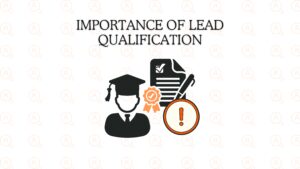
Step-by-Step Process to Qualify Leads in B2B
Step 1: Define Your Ideal Customer Profile (ICP)
Your Ideal Customer Profile (ICP) is a description of the type of company that would benefit most from your product or service. By defining your ICP, you can narrow down your target audience and focus only on the leads that are a perfect match.
To build your ICP, consider factors such as:
- Industry
- Company size
- Geographic location
- Revenue
- Pain points and challenges
For example, if you sell software to logistics companies, your ICP might be mid-sized logistics firms facing challenges with tracking shipments.
Step 2: Identify Key Decision Makers
In B2B sales, the decision to purchase is often made by a group of people, not just one individual. Identifying the right decision-makers early on is crucial.
Start by figuring out:
- Who has the authority to make purchasing decisions?
- Who will be using your product or service?
- Who influences the buying process?
For example, if you’re selling software, the decision-makers might include the IT manager, operations manager, and financial director. Engaging with the right people ensures you’re speaking to those who have the power to make decisions.
Step 3: Use the BANT or CHAMP Framework
To qualify leads, you need a framework that helps you assess their potential. Two common frameworks are:
- BANT: Budget, Authority, Need, Timeline
- CHAMP: Challenges, Authority, Money, Prioritization
Let’s break down BANT:
- Budget: Does the lead have the financial resources to buy your product?
- Authority: Are you speaking to someone who can make or influence decisions?
- Need: Does the lead have a real need for your product or service?
- Timeline: When are they looking to make a purchase?
Similarly, CHAMP focuses on challenges and prioritization, making sure you’re solving a real pain point for the lead and addressing their most urgent needs.
Step 4: Lead Scoring
Lead scoring is a method used to rank leads based on their level of interest and how closely they match your ICP. It involves assigning points to different behaviors or characteristics, such as:
- Number of website visits
- Interaction with emails
- Engagement with your content (downloads, webinars)
- Company size and industry
By assigning scores, you can prioritize leads that are most likely to convert. The higher the score, the hotter the lead.
Step 5: Analyze Lead Behavior and Engagement
Understanding how leads interact with your company helps determine their level of interest. Tools like CRM systems and marketing automation software can track:
- Email opens and clicks
- Website visits and page views
- Social media engagement
For example, if a lead has visited your pricing page multiple times, downloaded a case study, and responded to your emails, they may be close to making a decision.
Step 6: Continuous Reassessment and Nurturing
Lead qualification is not a one-time process. As leads move through your sales funnel, their needs and priorities might change. That’s why it’s essential to continuously reassess and nurture leads that aren’t ready to buy yet.
For example, leads that don’t immediately qualify can be nurtured through email campaigns, webinars, or other content that addresses their pain points. Over time, these leads may become more qualified and ready to engage with your sales team.
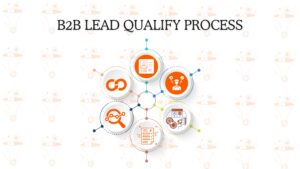
If you’re looking for experts who understand this industry and its challenges, reach out to us for a quick intro call and get to know more about how SalesHarbor can assist you. We can integrate your desired strategies into your business’s framework seamlessly.


